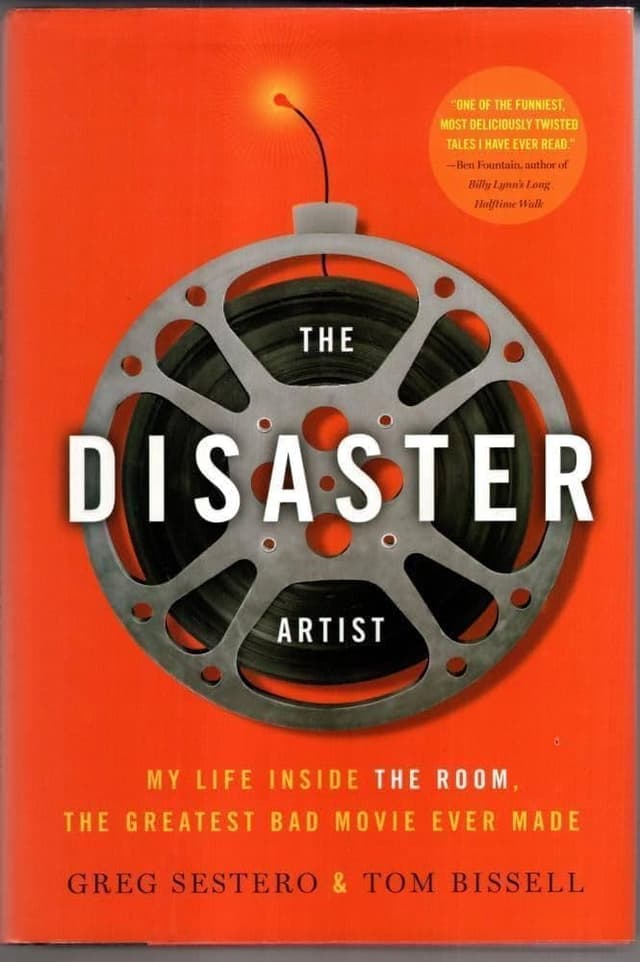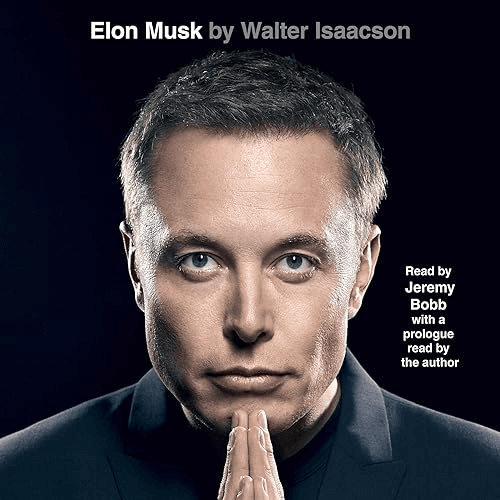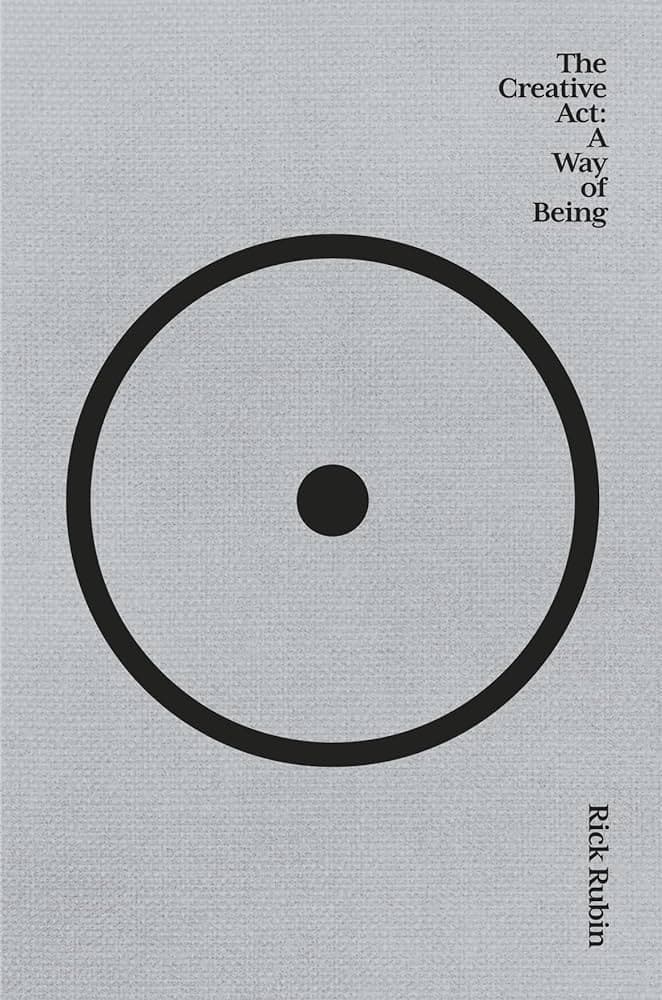The Black Swan by Nassim Nicholas Taleb vs. The Disaster Artist
The Black Swan by Nassim Nicholas Taleb
Skin in the Game may be nice but The Black Swan is the OG Nicholas Taleb. Read this book to learn how to think and avoid biases and reread at least once very couple of years.
The Disaster Artist
The best book about the best director in the world. It was such a great book it was adapted into a movie. Bet the other books on this list can't say that!
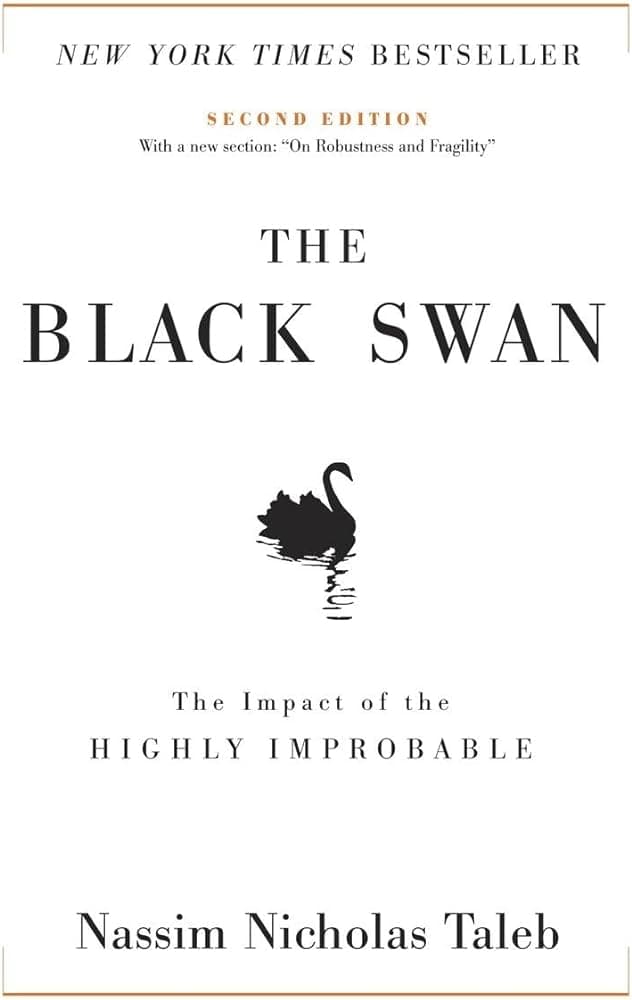
Reviews
Reviews
| Item | Votes | Upvote |
|---|---|---|
| No pros yet, would you like to add one? | ||
| Item | Votes | Upvote |
|---|---|---|
| No cons yet, would you like to add one? | ||
| Item | Votes | Upvote |
|---|---|---|
| Entertaining | 1 | |
| Easy read | 1 | |
| Learn about Tommy Wiseau - the greatest movie director | 1 |
| Item | Votes | Upvote |
|---|---|---|
| No cons yet, would you like to add one? | ||
Frequently Asked Questions
'The Disaster Artist' focuses on the personal story of Tommy Wiseau and the making of the cult film 'The Room,' providing an entertaining and easy read. On the other hand, 'The Black Swan' by Nassim Nicholas Taleb explores complex theories about unpredictable events and their impact, offering deep insights into critical thinking and bias avoidance. The choice between the two depends on whether you prefer a light-hearted, entertaining narrative or a thought-provoking, analytical read.
'The Black Swan' by Nassim Nicholas Taleb is more educational as it delves into concepts of probability, uncertainty, and the impact of rare events, teaching readers how to think critically and avoid biases. 'The Disaster Artist' is more of an entertaining narrative focused on the personal story of making a cult film and does not offer the same depth of educational content.
'The Black Swan' by Nassim Nicholas Taleb explores the concept of unpredictable and rare events that have a massive impact on the world. The book delves into how these events are often rationalized in hindsight, despite being unexpected. It encourages readers to understand and embrace uncertainty, and to recognize the limitations of predictive models and human biases.
Nassim Nicholas Taleb is a Lebanese-American essayist, scholar, statistician, and former trader and risk analyst. He is known for his work on probability, uncertainty, and randomness, and has authored several books including 'The Black Swan,' 'Antifragile,' and 'Skin in the Game.' Taleb's work mainly focuses on the unpredictability of events and how individuals and systems can be robust or even benefit from disorder.
The main themes of 'The Black Swan' by Nassim Nicholas Taleb include the impact of rare and unpredictable events, the flaws of predictive models, human cognitive biases, and the concept of robustness and fragility in systems. Taleb argues that these 'Black Swan' events are often underestimated and can have profound consequences on societies and economies.
You should read 'The Black Swan' by Nassim Nicholas Taleb to gain a deeper understanding of how rare and unpredictable events can shape our world. The book provides valuable insights into recognizing and mitigating biases, improving decision-making under uncertainty, and preparing for the unexpected. It’s a thought-provoking read that challenges conventional wisdom and encourages critical thinking.
'The Disaster Artist' is a book that delves into the making of the cult classic film 'The Room,' directed by Tommy Wiseau. It provides an inside look at the film's production and offers insights into Wiseau's enigmatic personality.
Pros of 'The Disaster Artist' include its entertaining narrative, easy readability, and the opportunity to learn about Tommy Wiseau, who is considered by some as one of the greatest movie directors. No cons have been listed by users at this time.
'The Disaster Artist' was adapted into a movie due to its compelling story and the cult status of 'The Room.' The book's popularity and its detailed account of the film's production made it a strong candidate for a cinematic adaptation.
Related Content & Alternatives
- 1
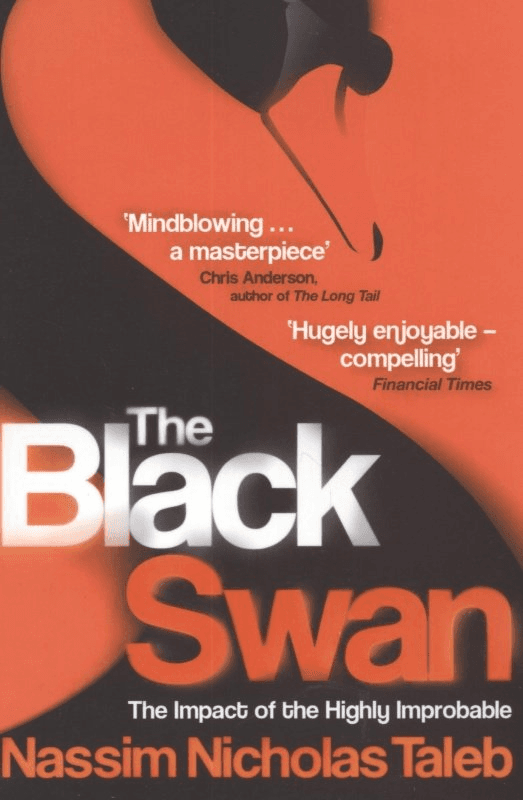 1.The Black Swan
1.The Black Swan"The Black Swan" by Nassim Nicholas Taleb is a seminal work that explores the profound impact of rare and unpredictable events, termed "Black Swans." Taleb argues that these events, which are often overlooked or underestimated, have massive consequences on our world. He highlights the limitations of traditional forecasting methods and emphasizes the need for resilience and adaptability in the face of uncertainty. Blending philosophy, economics, and personal anecdotes, Taleb provides a compelling critique of our understanding of risk and uncertainty. This book is essential for anyone interested in risk management, economics, and understanding the unpredictable nature of our world.
- 1
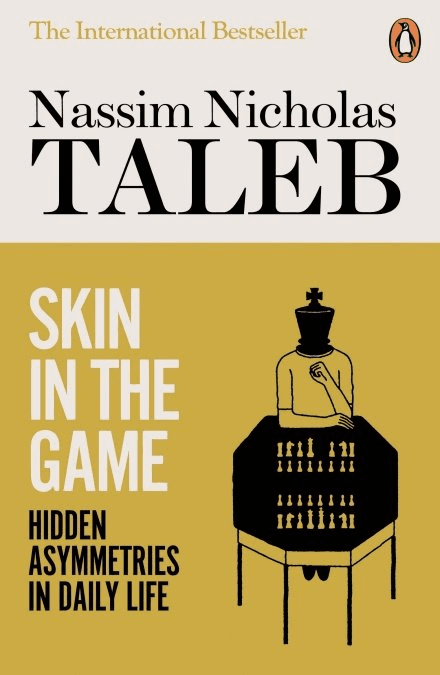 2.Skin in the Game: Hidden Asymmetries in Daily Life
2.Skin in the Game: Hidden Asymmetries in Daily LifeSkin in the Game: Hidden Asymmetries in Daily Life is a nonfiction book by Nassim Nicholas Taleb, published in 2018. Taleb’s main point is pretty simple: people should share in the risks of the decisions they make. If you benefit from something, you should also face the downsides if things go wrong. He calls this having “skin in the game.” Without that, people can make reckless choices that hurt others while staying safe themselves. The book covers everything from politics and business to religion and everyday life. Taleb doesn’t hold back on criticism. He talks about how some policymakers and financial experts make decisions that affect millions but don’t suffer when those decisions backfire. He uses examples like bankers profiting during booms but getting bailed out during crashes. Taleb also goes after what he calls “Intellectual Yet Idiot” types—educated people who, in his view, complicate things and give advice without understanding real-world consequences. He argues that real knowledge comes from doing and risking something yourself, not just sitting in a classroom or writing articles. One part of the book dives into how stubborn minorities—like people who strictly follow certain dietary rules—can influence the majority’s choices without even trying. There’s even a section where he talks about religion, saying that the idea of God taking human form (in Christianity) is the ultimate example of having skin in the game. Taleb’s writing style is direct, sometimes blunt, and he isn’t shy about calling out what he sees as nonsense. The book is part of his Incerto series, which looks at uncertainty and risk in modern life. Some people love his no-nonsense approach; others find him a bit too combative. Either way, Skin in the Game is about accountability—if you play the game, you should be prepared to take a hit when things go south.
- 0
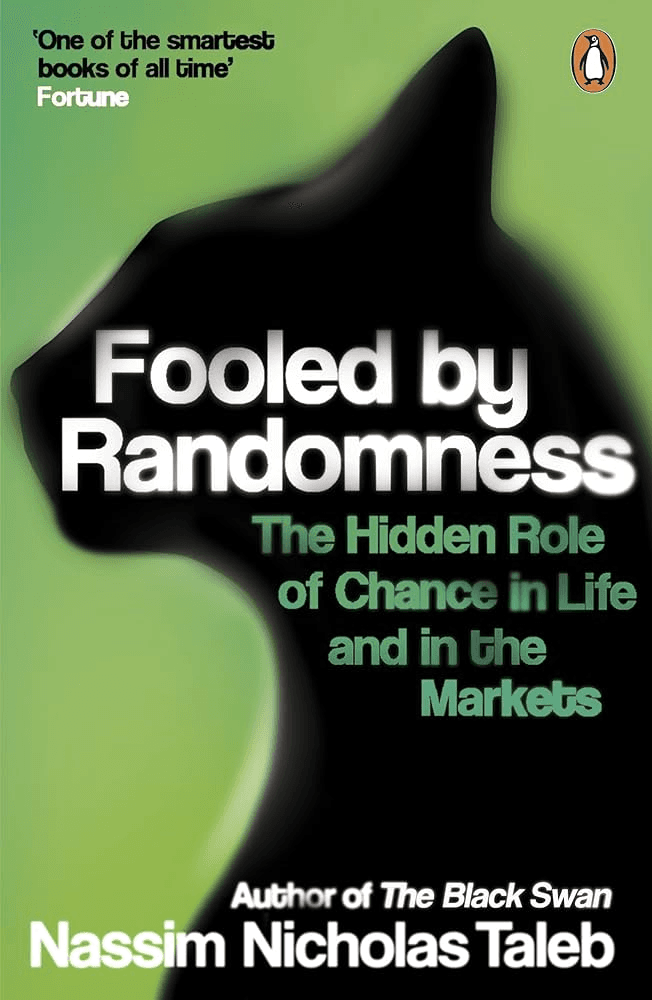 4.Fooled by Randomness
4.Fooled by Randomness"Fooled by Randomness" is a thought-provoking book by Nassim Nicholas Taleb that delves into the role of chance in our lives and how we often mistake random events for meaningful patterns. Through a mix of personal anecdotes, philosophical insights, and statistical analysis, Taleb explores how randomness affects the world of finance, business, and daily life. The book challenges readers to rethink their perceptions of success, failure, and the forces that drive outcomes. This book is ideal for readers interested in finance, probability, and the philosophical implications of randomness.
- 0
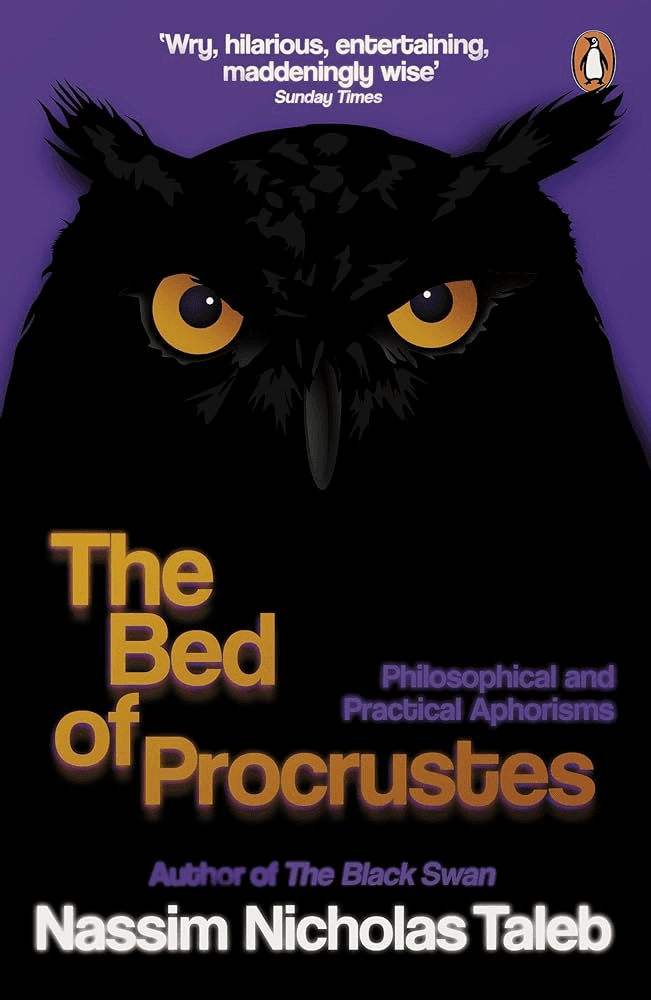 5.The Bed of Procrustes: Philosophical and Practical Aphorisms
5.The Bed of Procrustes: Philosophical and Practical Aphorisms"The Bed of Procrustes" is a collection of aphorisms by Nassim Nicholas Taleb that distills his philosophical insights into short, thought-provoking statements. The title refers to the Greek myth of Procrustes, symbolizing the tendency to force things into unnatural conformity. Through these aphorisms, Taleb critiques modern society's flaws, biases, and misconceptions, offering a sharp, often humorous, commentary on topics ranging from knowledge and science to wealth and human behavior. This book is perfect for readers who enjoy deep, philosophical musings and appreciate Taleb's sharp wit and unconventional perspectives.
- 6
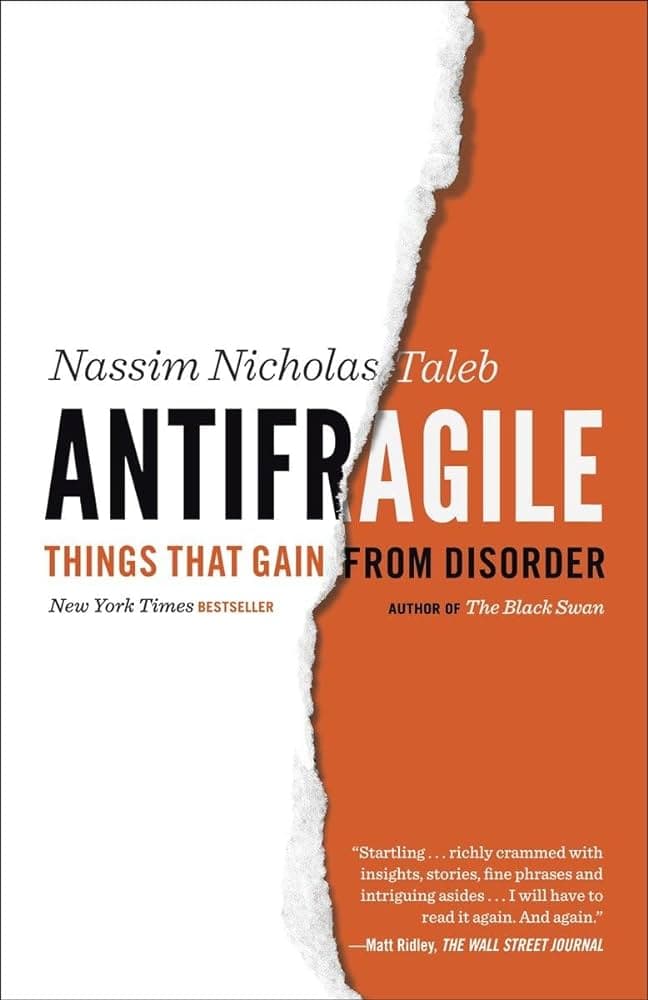 1.Antifragile: Things That Gain from Disorder
1.Antifragile: Things That Gain from Disorder"Antifragile: Things That Gain from Disorder" by Nassim Nicholas Taleb is a groundbreaking exploration of systems and entities that thrive and grow stronger in the face of stress, volatility, and chaos. Taleb introduces the concept of "antifragility," which goes beyond resilience or robustness. Through a mix of philosophy, practical wisdom, and real-world examples, Taleb illustrates how embracing uncertainty and leveraging disorder can lead to success and innovation. This book is essential for anyone interested in risk management, personal development, and understanding how to benefit from uncertainty and change.
- 1
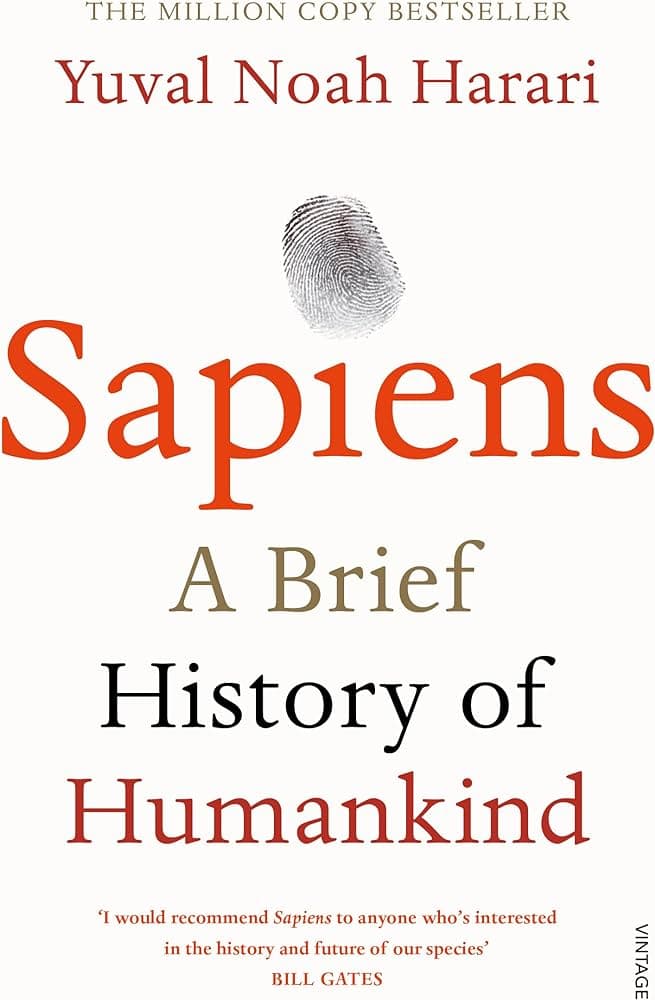 8.Sapiens: A Brief History of Humankind by Yuval Noah Harari
8.Sapiens: A Brief History of Humankind by Yuval Noah HarariThe great thing about this book is that it takes a big-picture view of human history. It attempts to explain the main themes of human history without getting bogged down in the details. Sapiens also debunks many popular myths about human history, including the one that people today live happier lives and have better diets than our hunter-gatherer predecessors. It comes with an epilogue about the future of humankind in light of ever-accelerating technological progress. With the recent advances in AI it is more relevant than ever. If you're going to read one book on history this year, read this one.
- 3
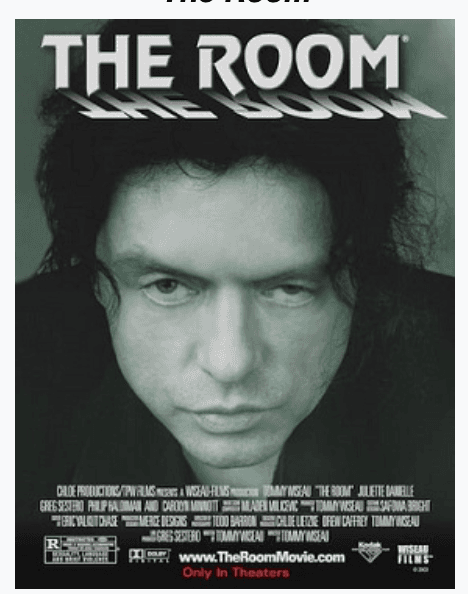 1.The Room
1.The RoomThe best movie, hands down ever, by the greatest director Tommy Wiseau. A classic masterpiece produced in 2003 is still watched in theaters today. Now that is longevity!
- 1
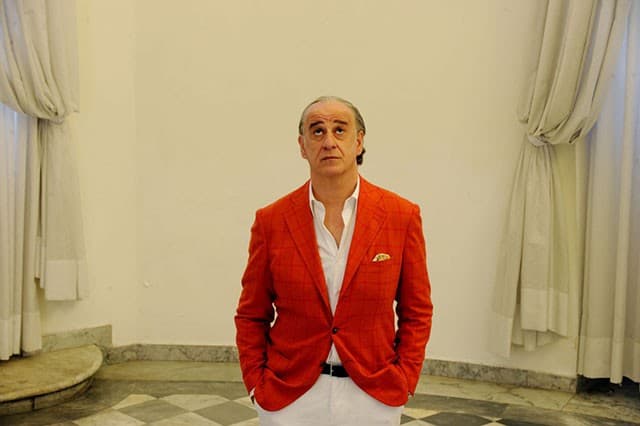 2.The Great Beauty
2.The Great Beautyor La grande bellezza in Italian. A masterpiece by Paolo Sorrentino in which a socialite Jep Gambardella (Toni Servillo) reflects on his life of lavish parties among the cultural elite of Rome. Stunning visual and cinematography.
- 1
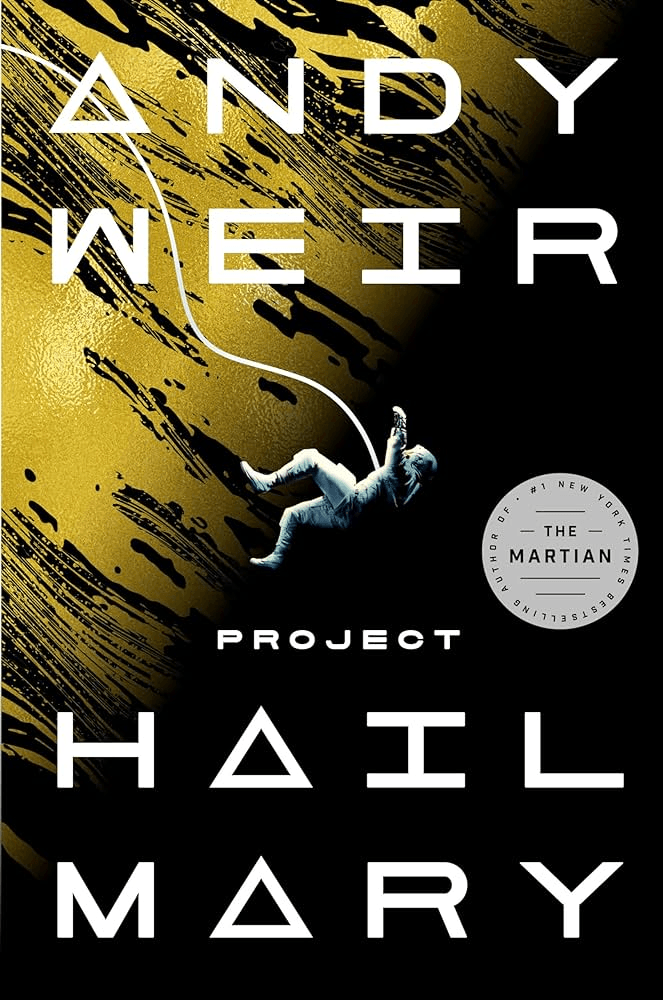 1.Project Hail Mary
1.Project Hail MaryRyland Grace is the sole survivor on a desperate, last-chance mission—and if he fails, humanity and the earth itself will perish. Except that right now, he doesn’t know that. He can’t even remember his own name, let alone the nature of his assignment or how to complete it. All he knows is that he’s been asleep for a very, very long time. And he’s just been awakened to find himself millions of miles from home, with nothing but two corpses for company. His crewmates dead, his memories fuzzily returning, Ryland realizes that an impossible task now confronts him. Hurtling through space on this tiny ship, it’s up to him to puzzle out an impossible scientific mystery—and conquer an extinction-level threat to our species. And with the clock ticking down and the nearest human being light-years away, he’s got to do it all alone. Or does he? An irresistible interstellar adventure as only Andy Weir could deliver, Project Hail Mary is a tale of discovery, speculation, and survival to rival The Martian—while taking us to places it never dreamed of going.
- 0
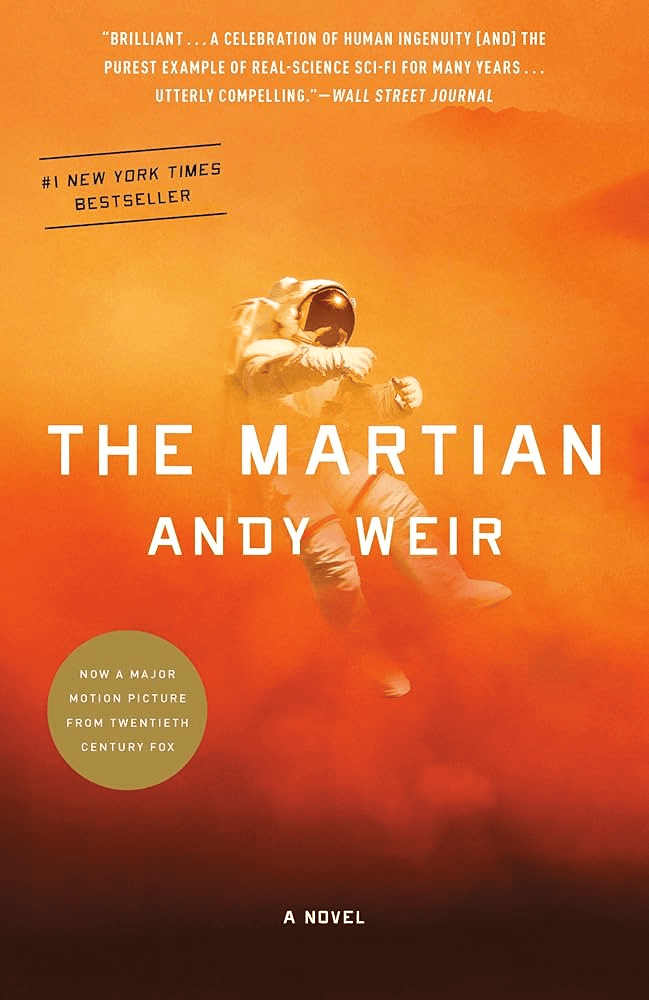 2.The Martian
2.The MartianSix days ago, astronaut Mark Watney became one of the first people to walk on Mars. Now, he’s sure he’ll be the first person to die there. After a dust storm nearly kills him and forces his crew to evacuate while thinking him dead, Mark finds himself stranded and completely alone with no way to even signal Earth that he’s alive—and even if he could get word out, his supplies would be gone long before a rescue could arrive. Chances are, though, he won’t have time to starve to death. The damaged machinery, unforgiving environment, or plain-old “human error” are much more likely to kill him first. But Mark isn’t ready to give up yet. Drawing on his ingenuity, his engineering skills—and a relentless, dogged refusal to quit—he steadfastly confronts one seemingly insurmountable obstacle after the next. Will his resourcefulness be enough to overcome the impossible odds against him?
- 2
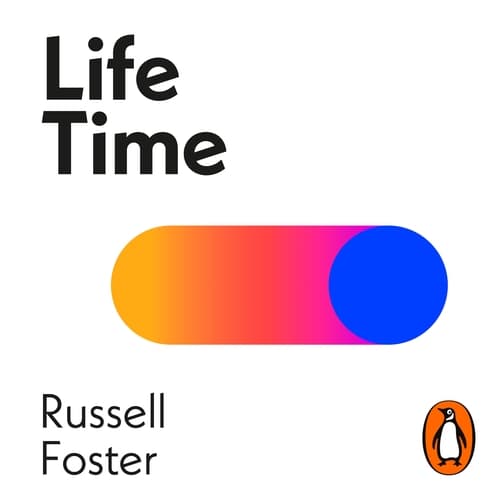 2.Life Time by Russell Foster
2.Life Time by Russell FosterA book about the circadian rhythm. Apparently, it's really misunderstood, even by your doctor. Read this book to understand your body better. It helped me improve my sleep.
- 2
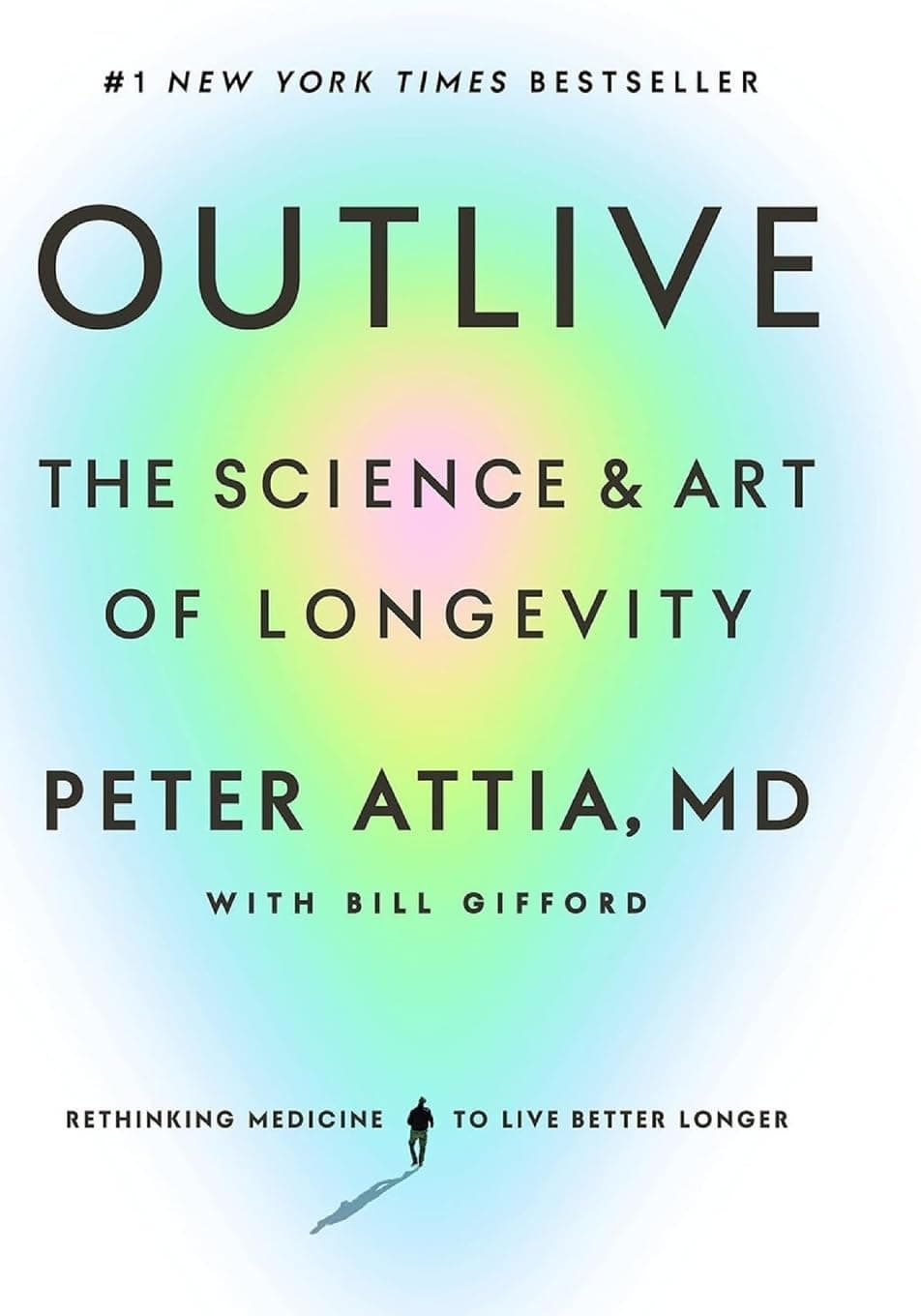 3.Outlive By Peter Attia
3.Outlive By Peter AttiaModern healthcare is often reactive. This is part of the reason why preventative medicine is so key.
- 3
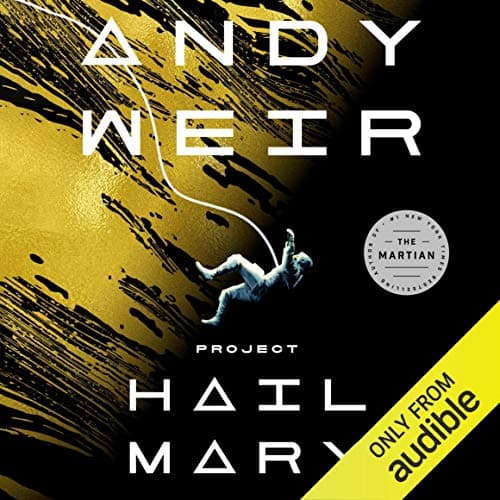 1.Project Hail Mary by Andy Weir
1.Project Hail Mary by Andy Weir"Project Hail Mary" is a space adventure story written by Andy Weir, the same guy who wrote "The Martian." It's about a man named Ryland Grace who wakes up on a spaceship with no memory of who he is or why he's there. He figures out he's on a mission to save Earth from disaster. The story follows him as he tries to remember his past and complete his mission, which involves a lot of science and problem-solving. Along the way, he meets an alien, and they form an unlikely friendship. The book is full of cool science stuff, suspense, and humor. It's like a mix of a mystery and a space adventure, with a lot of heart. The narration by Ray Porter is superb, with sound effects and excellent voice work.
- 1
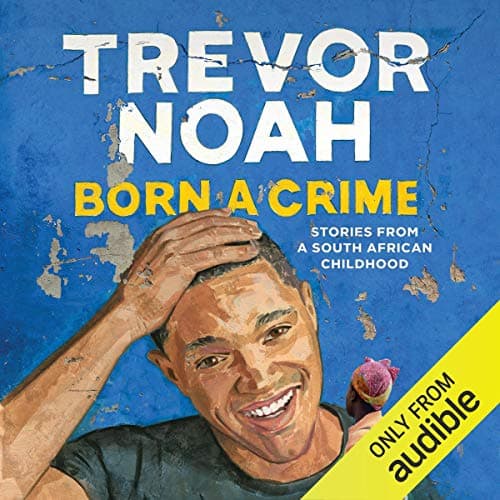 2.Born a Crime by Trevor Noah
2.Born a Crime by Trevor NoahBorn a Crime: Stories from a South African Childhood is Trevor Noah’s autobiography, published in 2016. It tells the story of his early years growing up in South Africa during and after apartheid. The title comes from the fact that his birth—he had a black Xhosa mother and a white Swiss-German father—was literally considered a crime under apartheid laws that banned interracial relationships at the time. The book is a mix of humor and tough truths. Much of it focuses on Trevor’s relationship with his mother, Patricia, who plays a huge role in his life. She’s portrayed as tough, religious, and fiercely independent—someone who dragged him to multiple church services every week, even during times of violence and unrest. Her strong influence shapes his character, often through strict discipline and sharp lessons about right and wrong. Trevor shares stories from his childhood that range from funny to intense. There’s a scene where his mother throws him out of a moving minibus to save him from a potentially dangerous driver. He also talks about using his talent for languages to navigate different cultural groups in South Africa, and how he hustled by selling bootleg CDs to make money. But not all his stories are light—he describes living with his abusive stepfather, Abel, whose violence culminated in him shooting Trevor’s mother, though she miraculously survived. Despite the heavy topics—racism, poverty, domestic abuse—Noah’s storytelling is funny, honest, and full of warmth. The book gives a personal look at how apartheid shaped everyday life but also highlights the resilience of his family, especially his mother. The memoir was widely praised, becoming a bestseller and earning spots on numerous “best of the year” lists. It struck a chord with readers around the world, and even inspired figures like U.S. Senator Tammy Duckworth and First Lady Jill Biden, who assigned it as reading for her English class. A film adaptation is in the works, with Lupita Nyong’o set to play Trevor’s mother and co-produce the project.
- 1
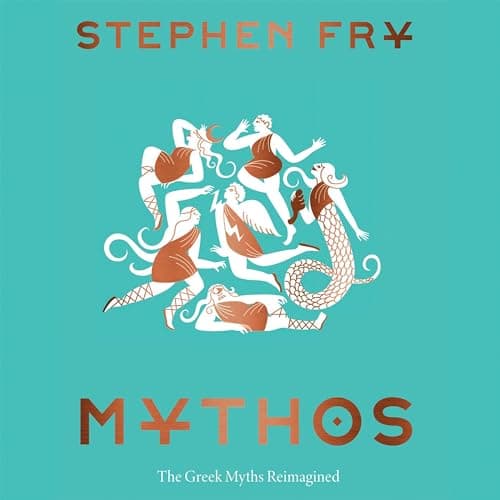 4.Mythos by Stephen Fry
4.Mythos by Stephen FryGreek myths retold by Stephen Fry. He is both the author and the narrator of this book. His wit and sense of humor come across in both the text and in the delivery. Plus, you actually get to learn Greek myths.
- 1
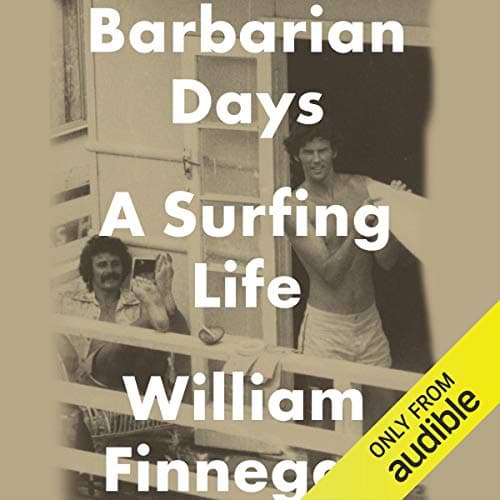 5.Barbarian Days by William Finnegan
5.Barbarian Days by William FinneganBarbarian Days: A Surfing Life is William Finnegan’s story about growing up obsessed with surfing. It’s not just about catching waves—it’s about a whole way of life that’s demanding, addictive, and sometimes dangerous. Finnegan started young, learning to surf in California and Hawaii, and kept chasing waves into adulthood, traveling through places like Fiji, Australia, Indonesia, and Africa. Along the way, he mixes adventure with self-reflection, talking about friendships formed in the water, the culture around surfing, and how it all fit with the times—especially during the social changes of the 1960s and '70s. The book isn’t just about the thrill of surfing; Finnegan dives into the technical side of waves and the patience it takes to master them. He’s honest about his youthful recklessness—like taking LSD before surfing a massive wave in Maui—and the risks that came with his travels, from malaria scares to navigating shady markets. Still, surfing pulls him along, even when he’s juggling a career as a war reporter and later, family life. At its core, Barbarian Days is an old-fashioned adventure tale mixed with a thoughtful look at what it means to be hooked on something so completely. Finnegan’s writing captures both the beauty and the grind of surfing, making you feel like you’re right there with him—whether on a remote beach or paddling out into icy waves off Long Island.
- 2
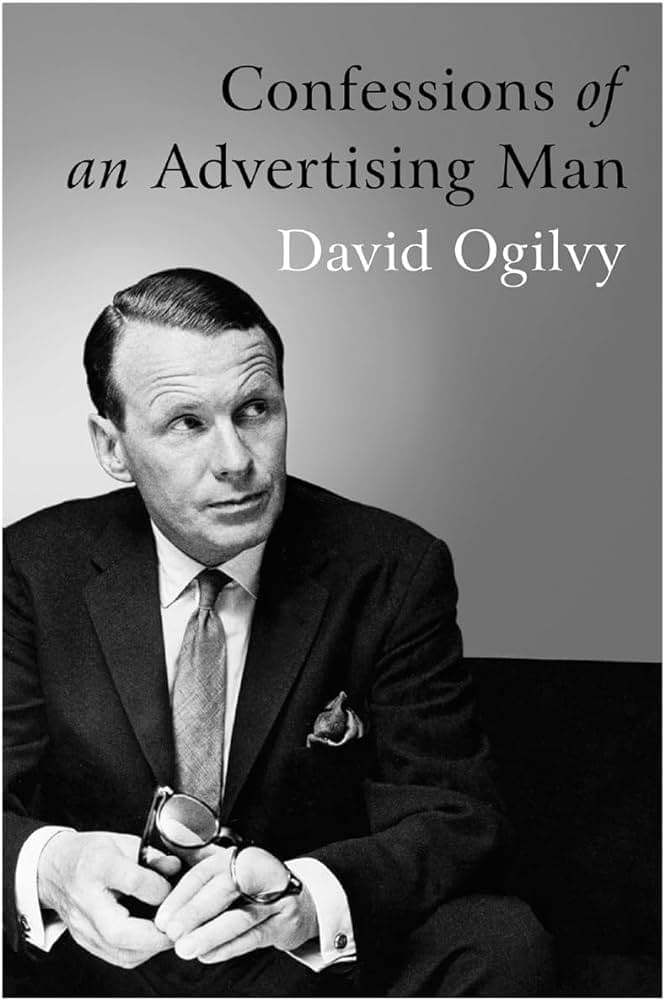 1.Confessions of an Advertising Man
1.Confessions of an Advertising ManDavid Ogilvy was considered the "father of advertising" and a creative genius by many of the biggest global brands. First published in 1963, this seminal book revolutionized the world of advertising and became a bible for the 1960s ad generation. It also became an international bestseller, translated into 14 languages. Fizzing with Ogilvy's pioneering ideas and inspirational philosophy, it covers not only advertising, but also people management, corporate ethics, and office politics, and forms an essential blueprint for good practice in business.
- 2
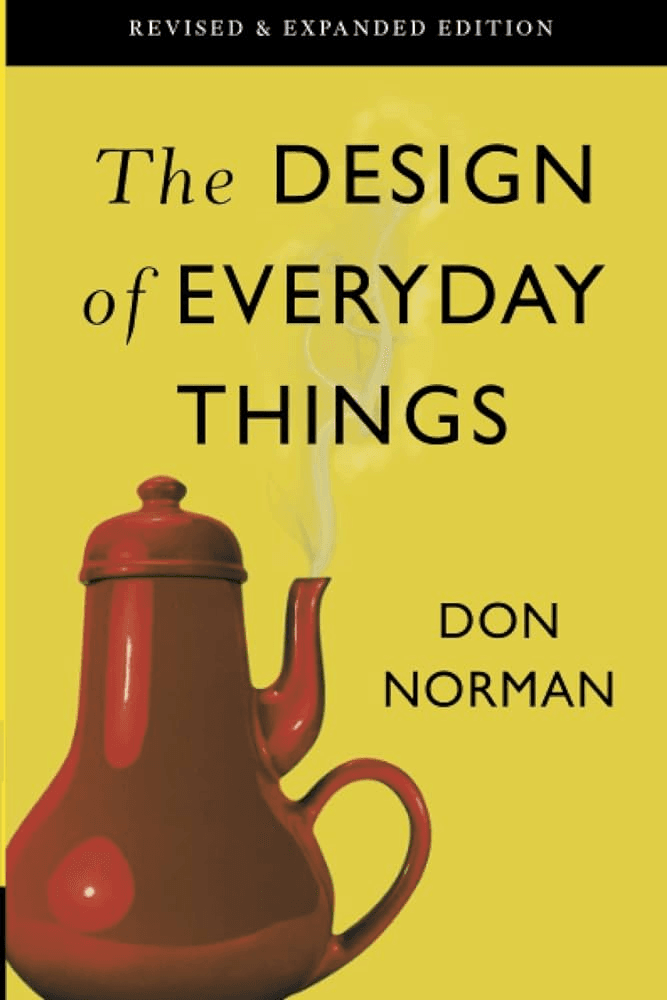 2.The Design Of Everyday Things
2.The Design Of Everyday ThingsEven the smartest among us can feel inept as we fail to figure out which light switch or oven burner to turn on, or whether to push, pull, or slide a door. The fault, argues this ingenious -- even liberating -- book, lies not in ourselves, but in product design that ignores the needs of users and the principles of cognitive psychology. The problems range from ambiguous and hidden controls to arbitrary relationships between controls and functions, coupled with a lack of feedback or other assistance and unreasonable demands on memorization. The Design of Everyday Things shows that good, usable design is possible. The rules are simple: make things visible, exploit natural relationships that couple function and control, and make intelligent use of constraints. The goal: guide the user effortlessly to the right action on the right control at the right time. The Design of Everyday Things is a powerful primer on how -- and why -- some products satisfy customers while others only frustrate them.
